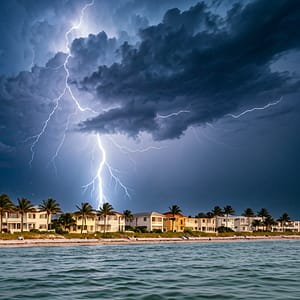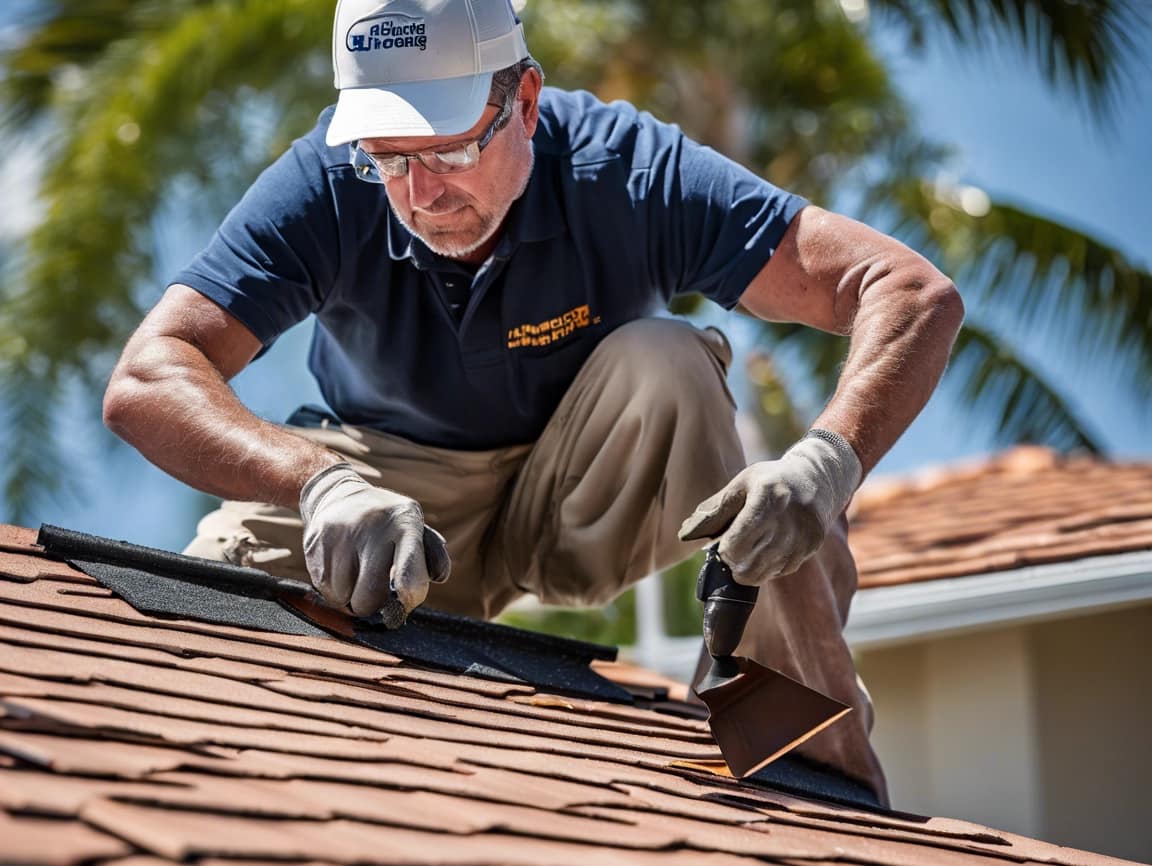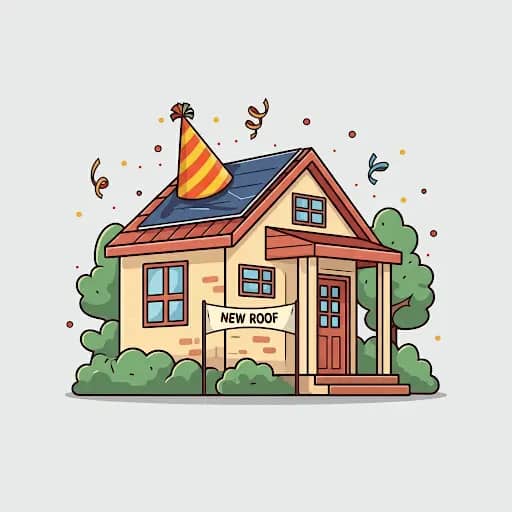
Introduction:Roofing Services 101
Roof care is an often overlooked but absolutely critical aspect of homeownership. Your roof is your home's first line of defense against the elements, protecting your family and possessions from rain, snow, wind, and sun. While it may not always be at the forefront of your mind, a well-maintained roof is essential for a safe, comfortable, and energy-efficient living space.
This comprehensive guide delves deep into the art and science of roof care, exploring everything from choosing the right materials and designs to ensuring proper installation and implementing effective maintenance practices. By understanding the key elements of roof care, you can make informed decisions that will not only protect your home but also enhance its curb appeal and value for years to come.
1. Choosing the Right Roofing Material:
The foundation of good roof care starts with selecting the right roofing material. Your choice will significantly impact your roof's durability, lifespan, and aesthetic appeal. Here's a breakdown of some popular options:
- Asphalt Shingles: These are the most common roofing material in the United States due to their affordability and ease of installation. They come in a variety of colors and styles, offering flexibility in design. However, they are susceptible to damage from high winds and hail and may require more frequent maintenance compared to other materials. Learn more about asphalt shingles.
- Tile Roofing: Clay or concrete tiles offer a classic, elegant look and exceptional durability. They are fire-resistant and can withstand extreme temperatures. However, tile roofs are heavy and require a strong support structure. They can also be brittle and prone to damage from impact. Learn more about tile roofing.
- Wood Shingles and Shakes: Wood roofing provides a natural, rustic aesthetic. While visually appealing, wood requires more diligent roof care, including regular treatments for insects and rot. It's also more susceptible to fire damage compared to other materials. Learn more about wood roofing.
When choosing a roofing material, consider factors such as your local climate, budget, desired aesthetic, and the architectural style of your home.
2. Roof Designs and Styles:
Beyond functionality, your roof's design significantly impacts your home's overall look and curb appeal. Here are some common roof styles:
- Gable Roof: This classic triangular roof is one of the most popular styles. It's simple to construct and offers good ventilation. Learn more about gable roofs.
- Hip Roof: Featuring slopes on all four sides, hip roofs are known for their stability and resistance to high winds. Learn more about hip roofs.
- Mansard Roof: This design has two slopes on each side, with the lower slope being steeper than the upper slope. It can create additional living space in the attic. Learn more about mansard roofs.
- Gambrel Roof: Similar to a mansard roof, gambrel roofs have two slopes on each side, but the lower slope is less steep. This style is often seen on barns and traditional homes. Learn more about gambrel roofs.
Choosing a roof design that complements your home's architectural style is crucial for enhancing its visual appeal.
3. The Importance of Professional Roof Installation:
Even the best roofing materials won't perform optimally without proper installation. Professional roofing contractors have the expertise and experience to ensure your roof is installed correctly, maximizing its lifespan and performance. Here's why professional installation is essential:
- Proper Underlayment: The underlayment acts as a secondary barrier against moisture, protecting your home in case of shingle damage. Learn more about roofing underlayment.
- Effective Flashing: Flashing is installed around chimneys, vents, and other roof penetrations to prevent water leaks. Learn more about roof flashing.
- Adequate Ventilation: Proper ventilation helps regulate attic temperature and moisture levels, preventing damage to your roof and insulation. Learn more about attic ventilation.
Investing in professional installation is a crucial aspect of roof care, ensuring your roof's long-term performance and preventing costly repairs down the line.
4. Roof Care and Maintenance Practices:
Regular roof care and maintenance are essential for extending the life of your roof and preventing costly damage. Here are some key practices:
- Regular Inspections: Inspect your roof at least twice a year, in the spring and fall, to identify any signs of damage, such as missing or damaged shingles, cracked flashing, or clogged gutters. Learn more about roof inspections.
- Gutter Cleaning: Clean your gutters regularly to ensure proper drainage and prevent water damage to your roof and foundation. Learn more about gutter cleaning.
- Trim Overhanging Branches: Trim tree branches that overhang your roof to prevent damage from falling debris and to reduce the risk of moss and algae growth. Learn more about tree trimming.
- Remove Moss and Algae: Moss and algae can trap moisture and damage your roof. Use a specialized roof cleaner to remove these growths. Learn more about removing moss and algae.
- Prompt Repairs: Address any signs of damage promptly to prevent further deterioration and costly repairs. Learn more about roof repairs.
By following these roof care practices, you can significantly extend the life of your roof and avoid major problems.
5. Recognizing When to Call a Professional:
While some minor roof repairs can be handled by homeowners, it's essential to recognize when to call a professional roofing contractor. Here are some situations where professional help is necessary:
- Significant Roof Damage: If you notice extensive damage to your roof, such as missing shingles, large holes, or structural issues, it's best to contact a professional.
- Leaks and Water Damage: If you have a leak in your roof, it's crucial to have it repaired by a professional to prevent further water damage to your home.
- Complex Repairs: Repairs involving flashing, chimneys, or other complex areas of your roof should be handled by a qualified roofing contractor.
- Safety Concerns: Working on a roof can be dangerous. If you're not comfortable working at heights or don't have the necessary safety equipment, it's best to leave the job to a professional.
Conclusion:
Roof care is an investment in your home's longevity, value, and your family's safety. By choosing the right materials, ensuring proper installation, and implementing regular maintenance practices, you can protect your home from the elements and enjoy peace of mind for years to come. Remember, a well-maintained roof not only enhances your home's curb appeal but also provides a safe and comfortable living environment for you and your loved ones.
The Impact of South Florida Weather on Roofing: A Comprehensive Analysis
Abstract
South Florida, encompassing vibrant cities like Miami, Fort Lauderdale, Boca Raton, West Palm Beach, and Delray Beach, boasts a subtropical climate characterized by warm temperatures, high humidity, and a distinct wet and dry season.
This unique weather pattern, while alluring to residents and tourists alike, poses significant challenges to building infrastructure, particularly roofing systems. This research article delves into the intricacies of South Florida's weather, analyzing its historical patterns, current trends, and future projections. It further examines the implications of these climatic conditions on roofing materials and systems, exploring the optimal timing for roof replacement, the performance of various roofing types in extreme weather events, and the long-term effects of weather exposure on roof longevity. By drawing on a comprehensive review of scientific literature, industry data, and expert insights, this study aims to provide homeowners and industry professionals with a comprehensive understanding of the complex relationship between South Florida's weather and roofing performance.1. Introduction
South Florida's climate is a defining feature of the region, attracting millions with its promise of sunshine and warmth. However, this tropical paradise is also susceptible to extreme weather events, including hurricanes, intense rainfall, and high winds.
These conditions exert significant stress on buildings, particularly their roofs, which serve as the first line of defense against the elements. The choice of roofing materials, installation techniques, and maintenance practices are therefore crucial for ensuring the structural integrity and longevity of buildings in this region.This article provides an in-depth examination of South Florida's weather patterns, focusing on the cities of Miami, Fort Lauderdale, Boca Raton, West Palm Beach, and Delray Beach. It explores the historical climate data, current trends, and future projections, taking into account the potential impacts of climate change.
Moreover, the article analyzes the implications of these weather conditions on roofing systems, offering insights into the optimal timing for roof replacement, the performance of different roofing materials in extreme weather events, and the long-term effects of weather exposure on roof durability.2. Understanding South Florida's Weather
2.1 Historical Climate Data and Current Trends
South Florida's climate is classified as subtropical, characterized by warm temperatures year-round, high humidity, and a distinct wet and dry season. The region experiences a pronounced wet season from May to October, with frequent afternoon thunderstorms and occasional tropical storms and hurricanes. The dry season, from November to April, is marked by lower humidity and generally sunny skies.
Historical climate data for South Florida reveals consistent trends of high temperatures and rainfall. Miami, for example, has an average annual temperature of around 76°F (24°C), with summer highs often exceeding 90°F (32°C) (National Weather Service, 2023). Fort Lauderdale, Boca Raton, West Palm Beach, and Delray Beach experience similar temperature ranges.
Rainfall patterns are equally consistent, with the region receiving an average annual precipitation of approximately 60 inches (152 cm), primarily during the wet season (National Weather Service, 2023).Current trends indicate a warming climate in South Florida, with both daytime and nighttime temperatures increasing steadily over the past few decades. According to the Southeast Regional Climate Center (2023), the average annual temperature in the region has increased by approximately 1.5°F (0.8°C) since the early 20th century. This warming trend is accompanied by an increase in the frequency and intensity of extreme heat events.
2.2 Future Climate Projections
Climate models project significant changes in South Florida's weather patterns in the coming decades. These projections suggest a continued warming trend, with average annual temperatures expected to increase by 3-7°F (1.7-3.9°C) by the end of the century, depending on the emissions scenario (Southeast Climate Consortium, 2022). This warming will be accompanied by more frequent and intense heat waves, posing risks to human health and infrastructure.
Rainfall patterns are also projected to change, with an increase in the intensity of extreme rainfall events. While the overall amount of annual rainfall may not change significantly, the distribution of rainfall is expected to shift, with longer dry periods punctuated by heavier downpours. This shift could lead to increased flooding and strain on drainage systems.
Sea level rise is another significant concern for South Florida. As global temperatures rise, glaciers and ice sheets melt, contributing to higher sea levels. Projections indicate that sea levels in South Florida could rise by 2-6 feet (0.6-1.8 m) by the end of the century, depending on the emissions scenario and local factors (Southeast Florida Regional Climate Change Compact, 2019). This rise in sea level will exacerbate coastal flooding, particularly during high tides and storm surges.
3. Roofing in South Florida: Challenges and Considerations
3.1 The Impact of Weather on Roofing Materials
South Florida's weather poses unique challenges to roofing systems. The combination of high temperatures, intense sunlight, humidity, and frequent heavy rainfall can significantly impact the performance and longevity of roofing materials.
High Temperatures and UV Radiation: The intense sunlight and high temperatures experienced in South Florida can cause roofing materials to degrade over time. Ultraviolet (UV) radiation from the sun can break down the chemical bonds in materials like asphalt shingles, leading to cracking, warping, and loss of waterproofing properties. High temperatures can also cause thermal expansion and contraction, which can stress the roofing system and lead to premature failure.
Humidity and Moisture: High humidity levels create a favorable environment for the growth of mold, mildew, and algae on roofing surfaces. These organisms can damage the roofing material, compromise its waterproofing capabilities, and create unsightly stains. Moisture penetration through cracks or damaged areas can also lead to leaks, water damage to the underlying structure, and the growth of mold within the building.
Heavy Rainfall and Wind: South Florida's wet season brings frequent heavy rainfall, which can test the waterproofing capabilities of roofing systems. Improperly installed or damaged roofs can allow water to penetrate the building envelope, leading to leaks, water damage, and structural problems. Strong winds associated with thunderstorms and hurricanes can also damage roofing materials, tearing off shingles, tiles, or metal panels.
Hurricanes: South Florida is particularly vulnerable to hurricanes, which can bring devastating winds, torrential rainfall, and storm surge. The high winds associated with hurricanes can cause significant damage to roofing systems, tearing off shingles, tiles, or metal panels, and even causing structural damage to the roof deck. Storm surge and flooding can further exacerbate water damage to buildings.
3.2 When to Replace Your Roof
Determining the optimal time to replace a roof is crucial for maintaining the structural integrity and protecting the investment in a home or building. In South Florida, the lifespan of a roof can vary depending on the type of material, the quality of installation, and the severity of weather exposure. However, several factors can indicate that a roof is nearing the end of its useful life:
- Age: Most roofing materials have a limited lifespan. Asphalt shingles typically last 20-30 years, while tile and metal roofs can last 50 years or more (National Roofing Contractors Association, 2023). However, these lifespans can be shortened in South Florida due to the harsh weather conditions.
- Visible Damage: Signs of wear and tear, such as cracked, curled, or missing shingles, granules in the gutters, or rust on metal roofs, indicate that the roof is deteriorating and may no longer be providing adequate protection.
- Leaks: Water stains on ceilings or walls are a clear indication of a roof leak, which can lead to significant water damage and mold growth if not addressed promptly.
- Moss or Algae Growth: Excessive moss or algae growth can indicate moisture retention and potential damage to the roofing material.
It is generally recommended to have a professional roof inspection every 2-3 years, especially after major storms, to assess the condition of the roof and identify any potential problems early on (Florida Roofing and Sheet Metal Contractors Association, 2023).
3.3 Roofing Materials Performance in Extreme Weather
The choice of roofing material is a critical decision for homeowners in South Florida, as different materials offer varying levels of performance in extreme weather events.
- Asphalt Shingles: Asphalt shingles are the most common roofing material in the United States, valued for their affordability and ease of installation. However, they are more susceptible to wind damage than other materials. In high-wind events, shingles can be lifted or torn off, leaving the underlying structure exposed to water damage. While some asphalt shingles are rated for higher wind speeds, they may still be vulnerable in hurricane-force winds.
- Tile Roofs: Clay and concrete tile roofs are popular in South Florida for their durability, aesthetic appeal, and resistance to fire and insects. They are also relatively resistant to wind damage, with some tile systems rated for wind speeds up to 150 mph (241 km/h). However, tiles can be cracked or dislodged by flying debris during hurricanes.
- Metal Roofs: Metal roofs, typically made of steel, aluminum, or copper, are known for their longevity, durability, and resistance to wind, fire, and insects. They are particularly well-suited for South Florida's climate, as they can withstand high winds and heavy rainfall. Metal roofs can be rated for wind speeds up to 180 mph (290 km/h) or higher (Metal Roofing Alliance, 2023). However, they can be susceptible to corrosion in coastal environments, particularly if not properly coated.
- Flat Roofs: Flat roofs, often used on commercial buildings, are typically covered with built-up roofing (BUR) or single-ply membranes like EPDM, TPO, or PVC. These systems can provide excellent waterproofing and durability if properly installed and maintained. However, they are susceptible to ponding water, which can lead to leaks and premature deterioration.
4. Future-Proofing Your Roof: Adapting to Climate Change
As South Florida's climate continues to evolve, it is essential to consider future weather patterns when making roofing decisions. Here are some strategies for future-proofing your roof:
- Choose Climate-Resilient Materials: Select roofing materials that are designed to withstand the projected changes in temperature, rainfall, and wind speeds. For example, consider high-wind-rated asphalt shingles, tile roofs with enhanced wind resistance, or metal roofs with corrosion-resistant coatings.
- Enhance Wind Resistance: For new roof installations or replacements, consider using enhanced wind-resistant installation techniques, such as using additional fasteners or stronger adhesives. This can help prevent wind damage during high-wind events.
- Improve Drainage: Ensure that your roof has adequate drainage to prevent ponding water, which can lead to leaks and damage. Consider installing larger gutters and downspouts to handle increased rainfall intensity.
- Regular Inspections and Maintenance: Implement a regular roof inspection and maintenance program to identify and address potential problems early on. This can help extend the lifespan of your roof and prevent costly repairs.
- Consider Cool Roofs: Cool roofs, which reflect more sunlight and absorb less heat, can help reduce the heat island effect and lower cooling costs. They can also help extend the lifespan of the roofing material by reducing thermal stress.
- Embrace Green Roofs: Green roofs, which are partially or completely covered with vegetation, can provide numerous benefits, including improved insulation, reduced stormwater runoff, and enhanced aesthetics. They can also help mitigate the urban heat island effect and improve air quality.
5. Conclusion
South Florida's unique weather presents significant challenges to roofing systems, demanding careful consideration of material selection, installation techniques, and maintenance practices. Understanding the historical climate data, current trends, and future projections is crucial for making informed decisions about roofing in this region.
By choosing climate-resilient materials, implementing wind-resistant installation methods, and prioritizing regular maintenance, homeowners and building owners can enhance the durability and longevity of their roofs, ensuring the protection of their investments and the safety of occupants. As the climate continues to change, adapting to these evolving conditions will be essential for maintaining the structural integrity and resilience of buildings in South Florida.References
- Florida Roofing and Sheet Metal Contractors Association. (2023). Roofing and waterproofing. Retrieved from https://www.floridaroof.com/
- Metal Roofing Alliance. (2023). Metal roofing 101. Retrieved from https://www.metalroofing.com/
- National Roofing Contractors Association. (2023). Roofing materials. Retrieved from https://www.nrca.net/
- National Weather Service. (2023). Climate of Miami. Retrieved from https://www.weather.gov/mfl/climate
- Southeast Climate Consortium. (2022). Climate change in the Southeast. Retrieved from https://secasc.ncsu.edu/resources/downscaled-climate-projections-for-the-southeast/
- Southeast Florida Regional Climate Change Compact. (2019). Unified sea level rise projection. Retrieved from https://southeastfloridaclimatecompact.org/
- Southeast Regional Climate Center. (2023). Climate data. Retrieved from https://www.drought.gov/sites/default/files/2023-09/Southeast%20Summer%202023.pdf
Contact us to schedule today!









